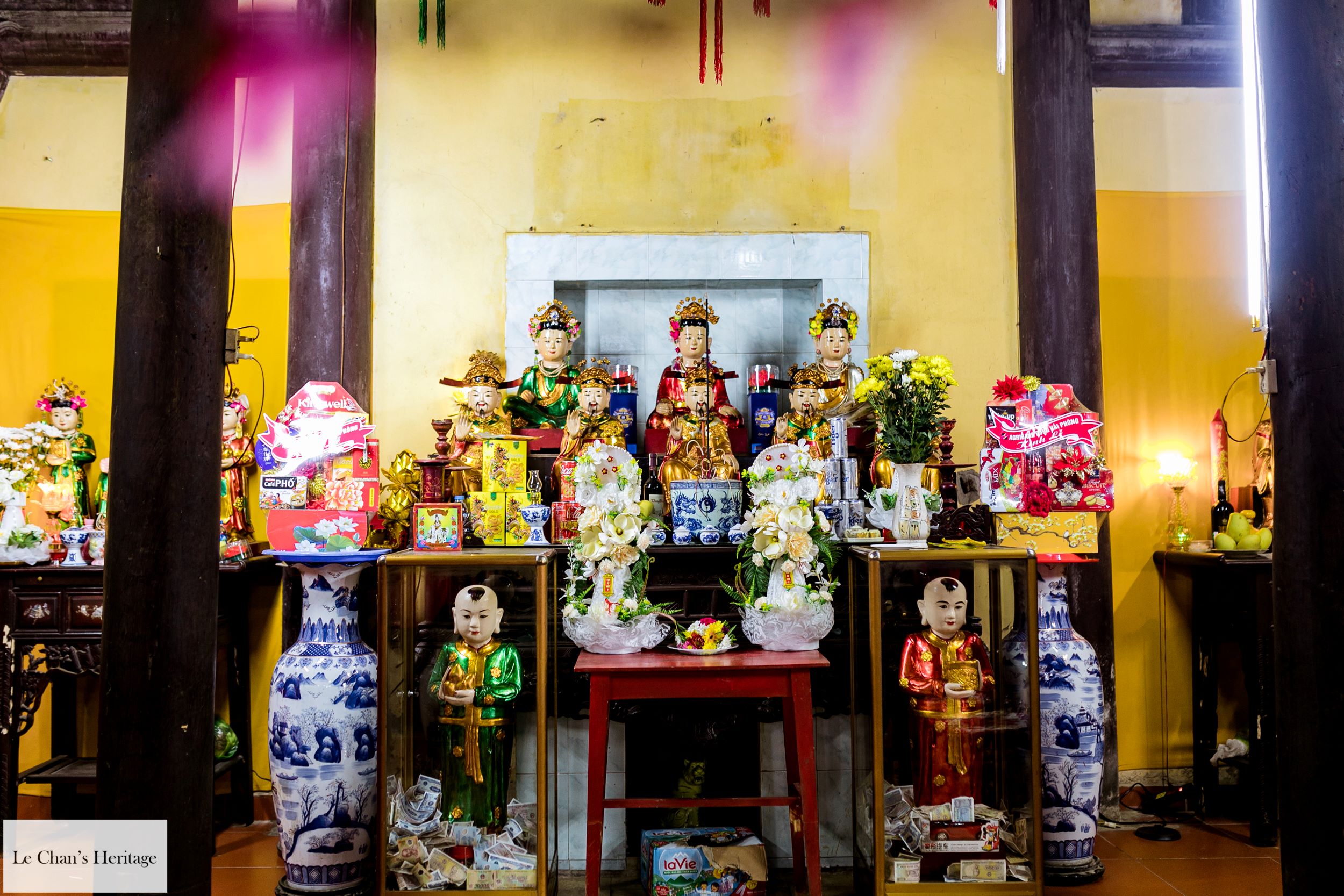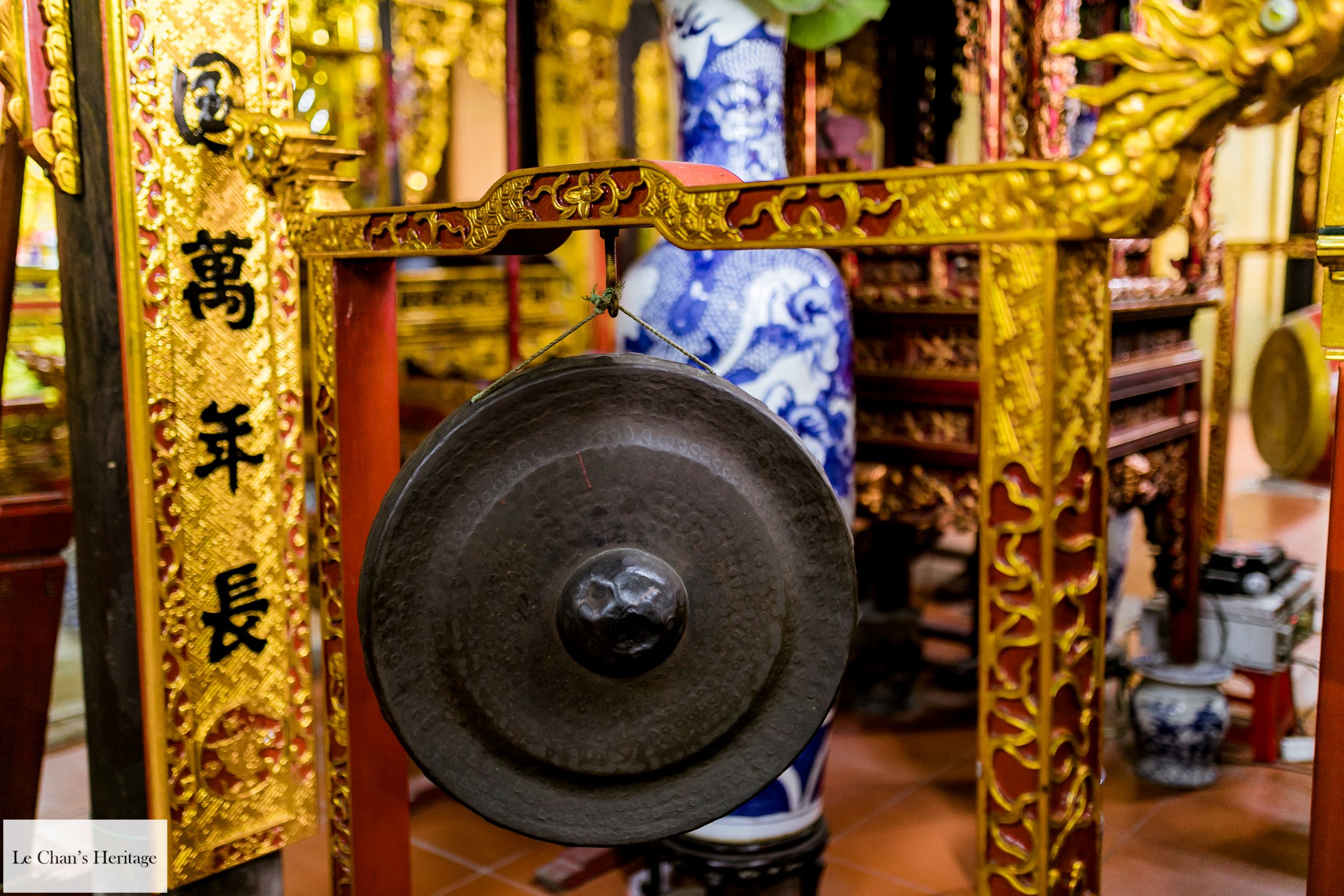1. Vị trí: Vũ toạ lạc tại số 63 đường Hồ Sen - Cầu
Rào 2, thuộc phường Hàng Kênh, quận Lê Chân cách trung tâm thành phố
Hải Phòng gần 2 km, là một điểm du lịch và di tích lịch sử quan trọng.
2. Lịch sử hình thành: Đình Từ Vũ được khởi dựng từ năm Đinh
Sửu 1697 đến năm Kỷ Mão 1699 thì khánh thành. Ban đầu dân làng gọi nơi đây là
Từ Vũ mới mục đích chính là thờ các vị tiên hiền, tiên nho, tri ân các vị đỗ
đạt trong làng, đề cao sự học của địa phương. Năm 1975, Từ Vũ bị xuống cấp, hư
hỏng nên dân làng đã quyên góp công, của để trùng tu lại.Năm 1853, vua Tự Đức
sắc phong Đức Vương Ngô Quyền làm Thành Hoàng của mười bảy xã thuộc sáu tổng
trong đó có Hàng kênh và Dư Hàng. Thành hoàng của làng Hàng Kênh lúc bấy giờ là
ngài Vũ Chí Thắng được dân làng rước ra thờ tại Đình Vũ. Từ đấy, Đình Vũ có
chức năng của một ngôi đình thờ Thành hoàng làng.
3. Nhân vật: Đình Từ Vũ tôn thờ Bản thổ Thành hoàng của làng Hàng Kênh là Vũ Chí Thắng. Thần tích về ngài Vũ Chí Thắng được tóm lược như sau: Vũ Chí Thắng còn gọi là Vũ Vạn Thắng, ông sinh năm sinh năm 1253, mất năm 1325. Ông sinh ra và lớn lên tại thôn Nam, làng Hàng Kênh, huyện An Dương, phủ Kinh Môn, tỉnh Hải Dương, nay là phường Hàng Kênh, quận Lê Chân, thành phố Hải Phòng. Thuở nhỏ Vũ Chí Thắng nổi tiếng khôi ngô, tuấn tú, khẳng khái khác thường. Ông là người có chí lớn, ham mê đọc sách, học tập binh pháp. Ông lại có sức khỏe hơn người nên tinh thông cả văn chương lẫn võ nghệ. Ông thường đi khắp nơi trên đất nước vẽ bản đồ, ghi đủ tên núi, tên sông, chú thích cả đường thủy, đường bộ, đường cái, tắt trên bản đồ rồi treo trên tường để hàng ngày nghiên cứu, ghi nhớ. Năm Thiệu Bảo thứ tư (1282). nghe tin quân Nguyên rục rịch sang xâm lược nước là lần thứ hai, ông bàn với các bạn cùng chí hướng ra gánh việc đời, gìn giữ đất nước: "Lúc này hả chẳng phải lúc chúng ta diệt thủ, cứu nước sao?" Khi ấy, Trần Quốc Tuấn - Quốc công Tiết chế thống lĩnh quân đội, ban hịch chiêu mộ nhân tài giúp nước Vũ Chí Thắng đến ra mắt Hưng Đạo Vương dâng kế phá giặc, được Vương tin dùng. Ông được làm việc bên cạnh Hưng Đạo Vương. Mỗi khi bàn việc quân, ông đều tham gia ý kiến hay, được Hưng Đạo Vương khen ngợi. Vương tiến cử vua Trần, vua hài lòng và phong cho ông chức Chỉ huy sứ, ủy thác cho ông chăm nom, bố trí doanh trại, đồn lũy, trấn giữ vùng ven biển Hải Đông. Đầu năm 1285, quân Nguyên xâm lược Đại Việt lần thứ 2, Vũ Chí Thắng trực tiếp chỉ huy và tham gia nhiều trận đánh lớn. Có một lần ông cho quân đóng giả quân Nguyên, ban đêm trà trộn vào trại giặc rồi đốt lớn làm hiệu trong đánh ra, ngoài đánh vào, tiêu diệt nhiều sinh lực địch.
1. Location: Tu
Vu is located at 63 Ho Sen - Cau Rao 2 street, in Hang Kenh ward, Le Chan
district, nearly 2 km from Hai Phong city center, is an important tourist
destination and historical site. .
2. History of
formation: Tu Vu communal house was built from the year Dinh Suu 1697 to the
year Ky Mao 1699 when it was inaugurated. Initially, the villagers called this
place Tu Vu, the main purpose was to worship the sages and confucian ancestors,
pay tribute to those who passed the exam in the village, and promote local
learning. In 1853, King Tu Duc ordained King Ngo Quyen as Thanh Hoang of 17
communes in 6 cantons including Hang Kenh and Du Hang. The tutelary god of Hang
Kenh village at that time, Mr. Vu Chi Thang, was brought in procession by the
villagers to worship at Dinh Vu. From then on, Dinh Vu functioned as a communal
house to worship the village's Tutelary God.
3. Character: Dinh Tu Vu worships the local Tutelary God of Hang Kenh village, Vu Chi Thang. The legend of Mr. Vu Chi Thang is summarized as follows: Vu Chi Thang, also known as Vu Van Thang, was born in 1253 and died in 1325. He was born and raised in Nam village, Hang Kenh village, An district. Duong, Kinh Mon district, Hai Duong province. When he was young, Vu Chi Thang was famous for being handsome, handsome, and unusually strong. He was a man with great ambition, passionate about reading books and learning the art of war. He had better health than others, so he was proficient in both literature and martial arts. He often traveled all over the country drawing maps, writing down mountain and river names, annotating waterways, roads, and highways, writing them on the map and hanging them on the wall for daily study and memorization. The fourth year of Thieu Bao (1282). Hearing that the Yuan army was preparing to invade the country for the second time, he discussed with his like-minded friends to take on life's tasks and preserve the country: "Isn't this the time for us to destroy the enemy and save the country?" At that time, Tran Quoc Tuan - National Cong Tiet, commanded the army and recruited talented people to help the country of Vu Chi Thang to present to Hung Dao Vuong a plan to destroy the enemy, which was trusted by Vuong. He worked next to Hung Dao Vuong. Every time he discussed military affairs, he always gave good ideas and was praised by Hung Dao Vuong. Vuong recommended King Tran, the king was satisfied and gave him the position of Commander, entrusting him to take care of, arrange barracks, fortifications, and guard the coastal area of Hai Dong. In early 1285, the Yuan army invaded Dai Viet for the second time, Vu Chi Thang directly commanded and participated in many major battles. One time, he sent his troops to impersonate the Nguyen army, at night they infiltrated the enemy camp and then set a large fire as a signal to attack inside and outside, destroying many enemy forces. When he passed away, he became a saint in the hearts of the people. People built a temple to worship God.
4. Structure: In 1845,
Tu Vu was restored, at this time the monument facing west had Nhi-style
architecture with 5 compartments, 2 front wings and 3 back palace compartments,
and Tu Vu was also renamed Dinh Vu . In 1894, the original Dinh Vu was restored
as it was upgraded in 1845. Fully 100 years after the last restoration of Dinh
Vu in July 1994. Also during this time, the relics management board and the
people reached an agreement. decided to change the name of Vu communal house to
Tu Vu communal house to avoid having the same name as the Dinh Vu relic located
in Trang Cat Ward, Hai An District.
Tu Vu communal house
also retains the load-bearing wooden frame system made of ironwood; On the
roofs, armpits, and seven porches are intricately carved and decorated with
themes of four sacred animals and four precious animals, typical of the Nguyen
Dynasty's wood carving art of the 19th century. The communal house still
remains. retains palanquins, idols, stone stele, stone bridges... dating from
the 18th century to the early 20th century. These antiques make an important
contribution to researching the history and fine arts of the communal house in
particular, and are living real-life documents for art and visual arts
researchers to continue researching traditional decorative arts. in traditional
ancient architecture.
5. Value and meaning: Tu Vu communal house, Hang Kenh ward, Le Chan district has a long history (17th - 18th centuries), associated with the formation and development of the land and people. people here. Dinh Tu Vu Festival has a noble meaning of commemorating the talented general whose contributions to the people and country have been deeply ingrained in the subconscious of every person here. The communal house festival has become a reminder and urge for many generations, from young to old, girls, boys, even children far away from their homeland, to return with respect and admiration. That demonstrates the principle "When drinking water, remember its source", a beauty in the spiritual cultural life and traditional beliefs of Dat Cang people.














